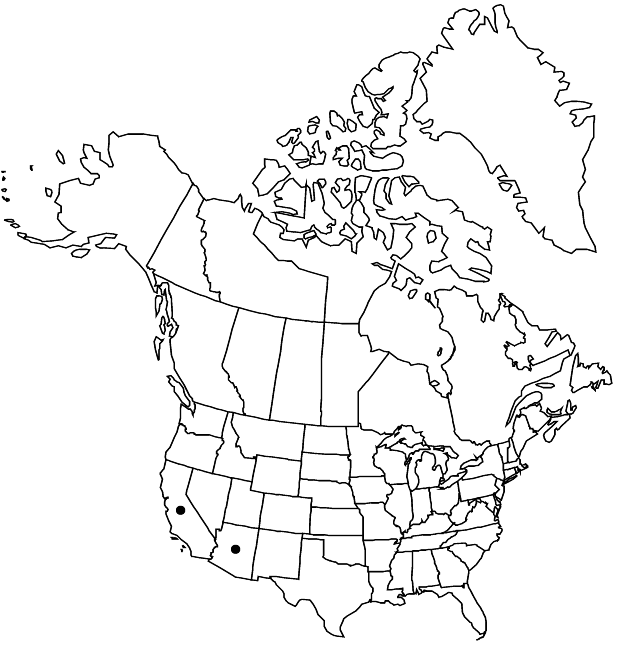Dudleya saxosa
New N. Amer. Crassul., 15. 1903 ,.
Caudices simple or apically branched, cespitose, 0.1–5 × 1–3 cm, axillary branches absent. Leaves: rosettes 1–2, not in clumps, 10–25-leaved, 3–12 cm diam.; blade pale green, oblong-lanceolate, tapering from base or slightly wider near middle, 3–15 × 0.5–2.5 cm, 1.5–6 mm thick, base 0.5–2.5 cm wide, apex narrowly acute, surfaces not farinose, glaucous at least when young. Inflorescences: cyme (red), 2–3-branched, obpyramidal; branches not twisted (flowers on topside), simple or 1 times bifurcate, (5–20 cm wide); cincinni 2–3, 2–20-flowered, circinate, 1–18 cm; floral shoots 5–40 × 0.2–0.9 cm; leaves 5–20, ascending, triangular-lanceolate, 5–70 × 3–10 mm, apex acute. Pedicels erect, not bent in fruit, 5–20 mm. Flowers: calyx 4–8 × 4.5–7 mm; petals connate 1–4 mm, bright to greenish yellow or red-marked, 8–20 × 9–20 mm, apex acute, tips often outcurved; pistils connivent, erect. Unripe follicles erect.
Distribution

Ariz., Calif.
Discussion
Subspecies 3 (3 in the flora).
The three geographically isolated subspecies of Dudleya saxosa differ mostly in size of parts and in level of ploidy.
Selected References
None.
Lower Taxa
Key
| 1 | Floral shoots 5-20 cm; cincinni 2-9-flowered, 1-4 cm; caudices 1-1.5 cm diam. | Dudleya saxosa subsp. saxosa |
| 1 | Floral shoots (10-)15-40 cm; cincinni 4-20-flowered, 3-18 cm; caudices 1-3 cm diam | > 2 |
| 2 | Petals 8-12(-15) mm, usually bright yellow, if more than 12 mm, then greenish yellow. | Dudleya saxosa subsp. aloides |
| 2 | Petals 12-16(-20) mm, bright yellow, red- tinged. | Dudleya saxosa subsp. collomiae |